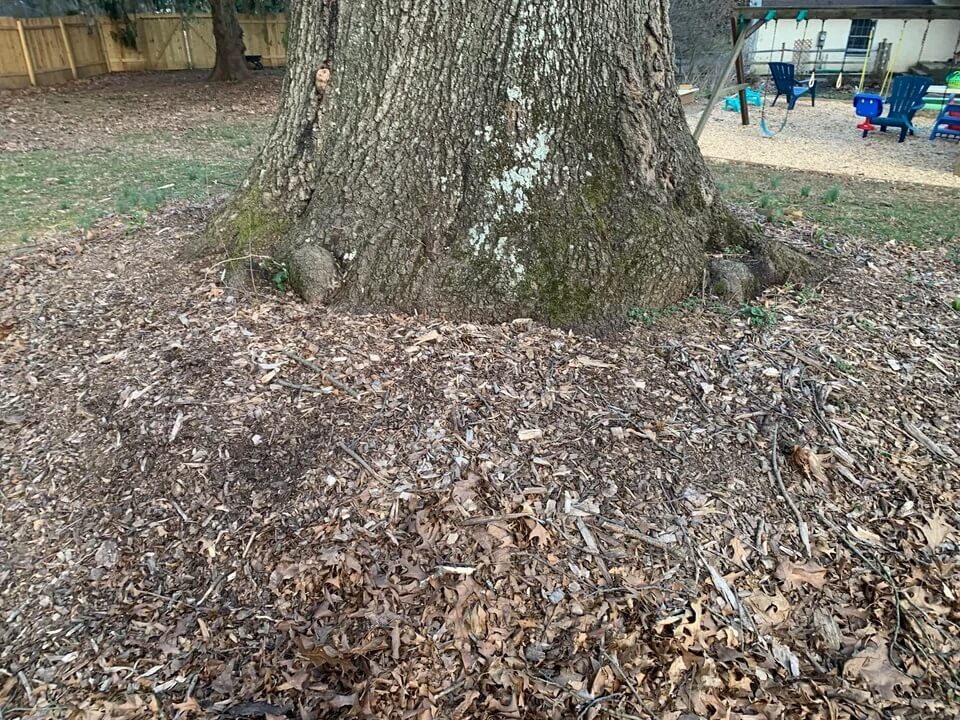A Redditor took to the r/arborists forum to ask how they could make things right after making a common landscaping error.
"Made the dumb mistake of volcano-ing my trees in Nov 21," the poster wrote. "How far back do I pull back the mulch to make things right?"

They added that they "essentially volcano-ed all my trees," which included more than 10 pines, two mulberries, one Japanese maple, and a massive oak.
Commenters, including an International Society of Arboriculture-certified arborist, said this mulch volcano wasn't too bad.
The practice does sometimes stretch believability, and it can have dire consequences. Mulch should not be in contact with the trunk or root flare of a tree, as it can cause fungus to grow as well as rot and decay by retaining moisture. Insect infestation, disease, and even the death of the tree are other ramifications of mulch volcanoes.
Mulching is important for the survival and development of trees, but it must be done right. A few inches spread out to the drip line is enough to help roots absorb moisture, insulate soil against extreme temperatures, and prevent weeds from growing.
The first step to rectifying a mulch volcano is to blow it up — carefully, if you're using a tool that could damage the tree, one user noted.
"Whatever was exposed prior to the burying should be exposed again completely," another user, an extension manager, said. "Pull the mulch entirely off any part of the tree. It's the roots of a tree that need the benefits of mulch, not the trunk.
"Contrary to common belief, trees grow their root systems like this, in the illustration on the right, with the greatest proportion of their roots in the top 12-18 [inches] of soil and often more than 2-3 times the width of the canopy as the tree grows. Mulch out as far as you can, just keep it from (piled up) contact with the tree."
Join our free newsletter for easy tips to save more, waste less, and help yourself while helping the planet.









